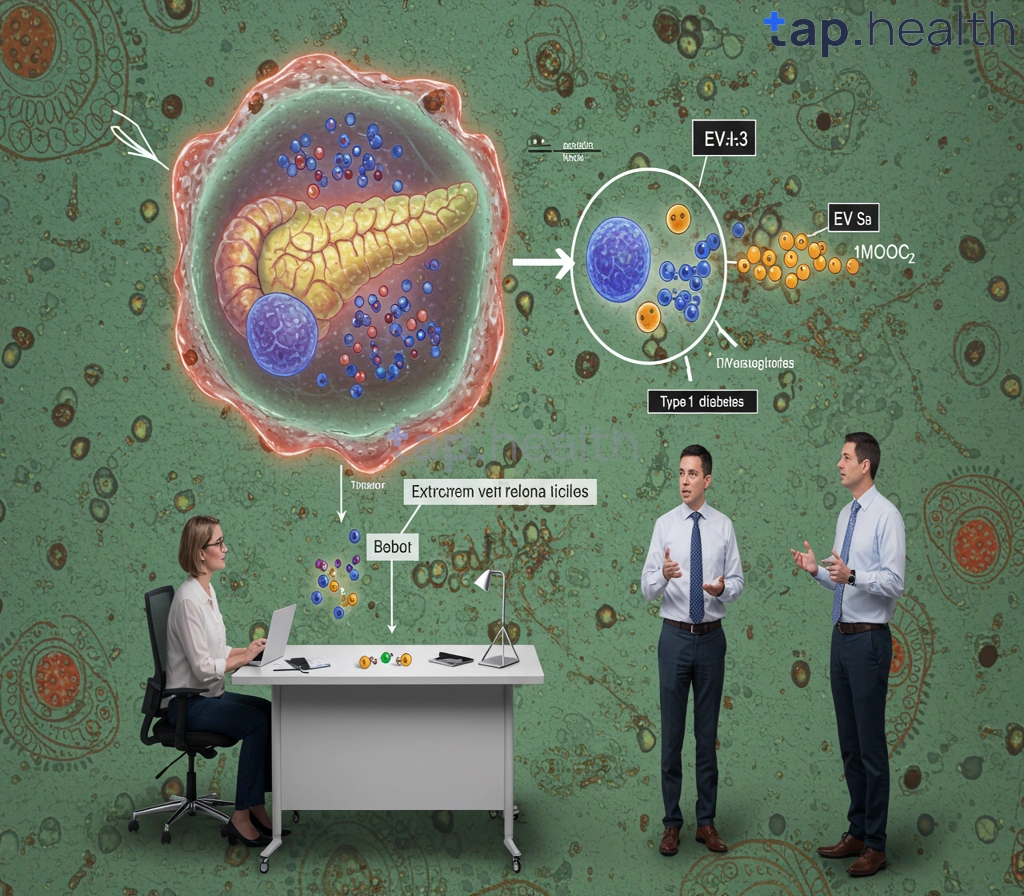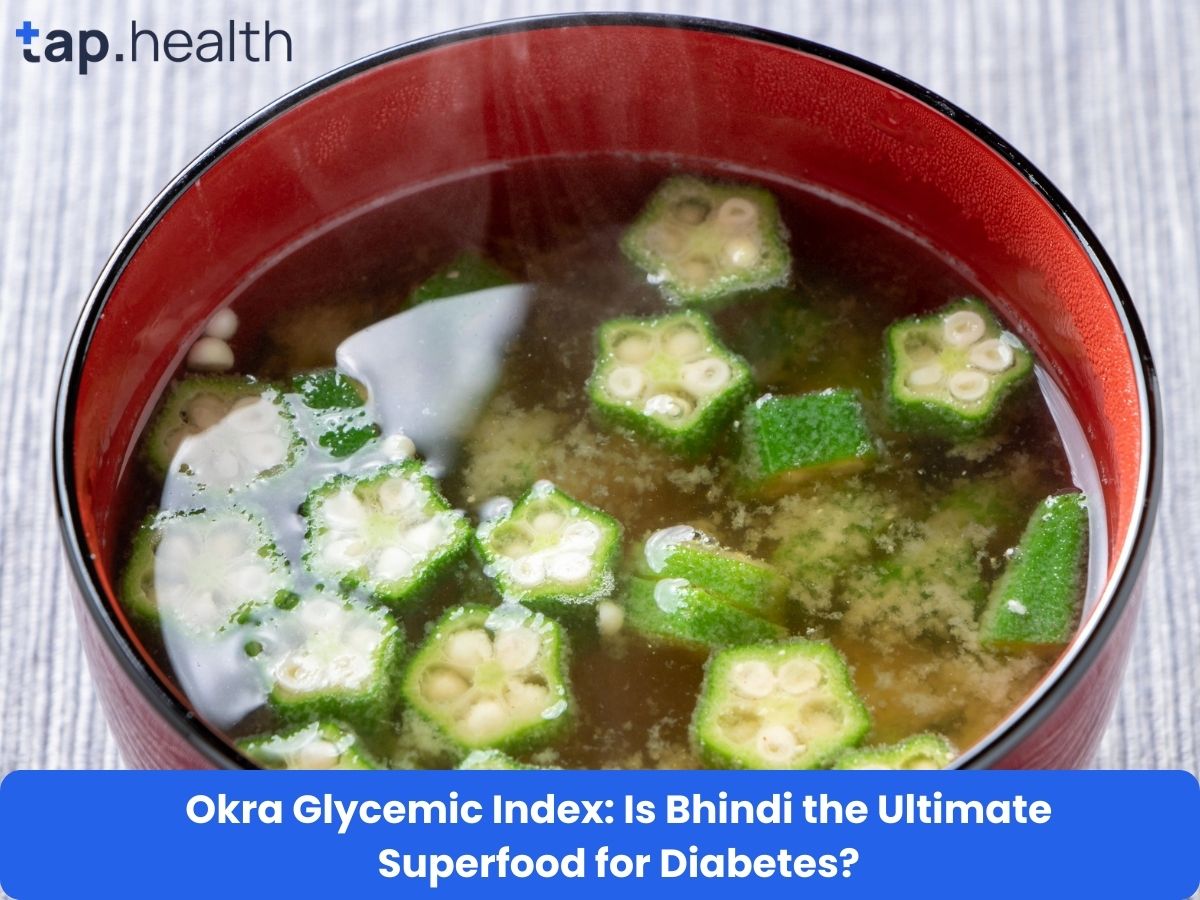Table of Contents
- Extracellular Vesicles: Key Players in Type 1 Diabetes?
- Decoding the Cargo: How EVs Contribute to T1D Development
- Understanding the Role of Extracellular Vesicle Cargo in Type 1 Diabetes
- Extracellular Vesicle Content and its Impact on Pancreatic Beta Cells
- A Guide to Extracellular Vesicle Research in Type 1 Diabetes
- Frequently Asked Questions
- References
Have you ever wondered what tiny cellular messengers might be contributing to the complex development of Type 1 Diabetes? We’re diving deep into the fascinating world of extracellular vesicles (EVs) to explore just that! Unpacking the Role of Extracellular Vesicle Cargo in Type 1 Diabetes Development is a critical area of research, and understanding the contents of these EVs – their “cargo” – could revolutionize our understanding of disease onset and progression. This blog post will explore the latest findings on how specific EV components might influence the autoimmune attack on pancreatic beta cells. Let’s unpack this together!
Extracellular Vesicles: Key Players in Type 1 Diabetes?
The global impact of type 1 diabetes is staggering, with approximately 2 million Americans living with the disease, including a significant number of children and adolescents. Understanding its pathogenesis is crucial, especially in regions like India and other tropical countries where diabetes prevalence is rising. Recent research highlights the potential role of extracellular vesicles (EVs) in this complex autoimmune disorder.
EV Cargo and Autoimmunity
EVs, nano-sized membrane-bound vesicles released by cells, carry a diverse cargo of molecules, including proteins, lipids, and nucleic acids. In type 1 diabetes, these EVs might act as messengers, transporting autoantigens or inflammatory molecules that contribute to the destruction of insulin-producing beta cells in the pancreas. This process involves a complex interplay of immune cells and inflammatory signaling pathways. Specific EV cargo components, yet to be fully elucidated, are likely pivotal in initiating and escalating the autoimmune response. Further research is needed to understand how these variations differ across populations, particularly in genetically diverse tropical populations. Understanding the impact of these EVs on homeostasis is crucial; for more information, see our blog on How Does Type 1 Diabetes Affect Homeostasis? Key Insights.
Regional Implications and Future Directions
The implications of EV research are significant, especially for regions like India and other tropical countries facing a growing burden of type 1 diabetes. Understanding the unique EV profiles in these populations could lead to region-specific diagnostic tools and therapeutic strategies. Future research should focus on identifying key EV cargo molecules associated with disease progression in diverse populations, paving the way for targeted interventions and improved patient outcomes. This includes studying the impact of environmental factors prevalent in tropical climates on EV composition and function. Investigating the potential of EVs as therapeutic targets or for early disease detection offers a promising avenue for future research and improved diabetes management in these regions. The question of whether a virus could be a contributing factor is also relevant; read more in our post on Can a Virus Cause Type 1 Diabetes in Adults?.
Decoding the Cargo: How EVs Contribute to T1D Development
The intricate relationship between extracellular vesicles (EVs) and Type 1 Diabetes (T1D) is an emerging area of research with significant implications for prevention and treatment. Understanding the “cargo” within these EVs—the molecules they carry—is crucial to unraveling their role in T1D pathogenesis. While research is ongoing, preliminary findings suggest that EVs released from immune cells and pancreatic islet cells may contribute to the autoimmune destruction of insulin-producing beta cells, a hallmark of T1D. This destruction leads to the hyperglycemia characteristic of the disease.
EV Cargo and Autoimmunity in T1D
The specific molecular cargo within EVs can influence their impact on T1D development. For instance, EVs carrying pro-inflammatory cytokines can exacerbate immune responses against beta cells, driving autoimmune destruction. Conversely, EVs carrying anti-inflammatory molecules might possess protective effects. Further research is needed to fully elucidate the complex interplay of these pro- and anti-inflammatory signals within the context of T1D. The diversity of EV cargo makes this a particularly challenging, yet rewarding area of investigation.
Regional Considerations and Prevention
While the mechanisms are still being elucidated, understanding the role of EV cargo in T1D is crucial, particularly in regions like India and other tropical countries where diabetes prevalence is high. The high incidence of both Type 1 and Type 2 diabetes in these regions necessitates a comprehensive approach to prevention and early detection. Considering that individuals with prediabetes have a 5-10% annual risk of developing Type 2 Diabetes, research into EV-based biomarkers could provide valuable tools for early risk stratification and personalized preventative strategies. This is especially pertinent given the complex interplay of genetic, environmental, and lifestyle factors influencing diabetes in these populations. Further research focusing on the specific EV cargo profiles in these populations is critical to developing targeted interventions. Early detection and lifestyle modifications, coupled with further research, are crucial steps towards mitigating the burden of T1D in these regions. Understanding the genetic predisposition is also vital; learning more about the genetic component can help in early detection and prevention. For more information on the genetic aspect of Type 1 Diabetes, read our article, Is Type 1 Diabetes Genetic?
Understanding the Role of Extracellular Vesicle Cargo in Type 1 Diabetes
The global impact of type 1 diabetes is staggering, with 1.2 million children and adolescents currently living with this autoimmune disease. Understanding its complex pathogenesis is crucial, especially in resource-constrained regions of India and other tropical countries where access to advanced healthcare might be limited. A promising area of research focuses on extracellular vesicles (EVs) and their cargo – the molecules they carry – as potential key players in type 1 diabetes development.
EVs and their role in immune dysfunction
EVs are tiny vesicles secreted by cells, acting as intercellular messengers. In type 1 diabetes, EVs derived from pancreatic islet cells, immune cells, and other tissues carry a diverse cargo of proteins, lipids, and microRNAs. This cargo can influence immune responses, potentially contributing to the autoimmune destruction of insulin-producing beta cells. For instance, EVs released from immune cells might carry molecules that promote inflammation and attack the islets, while those from islet cells might signal distress or contribute to immune tolerance breakdown. The question of whether are Type 1 Diabetics Immunocompromised? is closely related to the role of EVs and their cargo in immune dysfunction.
Regional implications and future research
The specific composition and effects of EV cargo may vary depending on genetic and environmental factors, making research in diverse populations, including those in India and other tropical countries, crucial. Understanding these variations could lead to region-specific diagnostic tools and therapeutic strategies. Further research into the EV cargo’s role in type 1 diabetes pathogenesis, particularly in these regions, is needed to develop targeted interventions and improve the lives of affected children and adolescents. This includes investigating the impact of environmental factors prevalent in tropical climates on EV composition and function. Early detection and personalized approaches tailored to specific populations are vital for effective management and ultimately, prevention. It’s also important to consider how diabetes affects other bodily systems, such as blood flow; How Does Diabetes Affect Blood Flow? is a critical consideration in overall health management.
Extracellular Vesicle Content and its Impact on Pancreatic Beta Cells
The alarming rise in diabetes, particularly in regions like India with approximately 2.5 million gestational diabetes cases annually, highlights the urgent need to understand its underlying mechanisms. One promising area of research focuses on the role of extracellular vesicles (EVs) and their cargo in type 1 diabetes development. EVs, tiny membrane-bound vesicles secreted by various cells, act as intercellular messengers, transporting proteins, lipids, and nucleic acids. In the context of type 1 diabetes, the content of these EVs holds significant implications for pancreatic beta cell function.
The Role of EV Cargo in Beta Cell Dysfunction
Dysfunctional EVs can contribute to beta cell destruction, a hallmark of type 1 diabetes. For instance, EVs carrying pro-inflammatory molecules or autoantigens can trigger immune responses targeting beta cells. Conversely, EVs containing protective factors might offer therapeutic potential. Research is actively exploring the specific EV cargo components involved, aiming to identify biomarkers for early detection and develop targeted therapies. This is crucial given the high prevalence of diabetes in India and other tropical countries, where early diagnosis and intervention are critical. Understanding the impact of these processes is also relevant to other areas of research, such as the study of epithelial cells in urine, which can provide additional insights into overall health.
Developing Region-Specific Strategies
Understanding the impact of EV cargo on beta cells is vital for developing effective prevention and treatment strategies in high-risk populations. Further research focused on the specific EV profiles in individuals from India and other tropical countries could reveal unique insights into disease mechanisms and potentially lead to the development of region-specific interventions. This research is crucial for addressing the substantial burden of diabetes in these regions. Collaboration between researchers and healthcare providers is essential to translate these findings into practical applications improving diabetes management and ultimately patient outcomes. The long-term consequences of diabetes-related complications, such as acute pancreatitis, also warrant consideration. Understanding the life expectancy after acute pancreatitis can help patients and their families make informed decisions.
A Guide to Extracellular Vesicle Research in Type 1 Diabetes
Understanding Extracellular Vesicles (EVs) in Type 1 Diabetes
Type 1 diabetes, an autoimmune disease affecting millions globally, remains a significant health challenge, especially in India and other tropical countries. A startling statistic reveals that 50% of diabetes cases worldwide go undiagnosed (diabetesatlas.org), highlighting the urgent need for improved understanding and early detection. Recent research focuses on the role of extracellular vesicles (EVs), tiny membrane-bound particles released by cells, in the pathogenesis of this disease. EVs carry various molecules, including proteins, lipids, and microRNAs, and their cargo can significantly influence intercellular communication and immune responses.
EV Cargo & Autoimmune Response
In type 1 diabetes, the immune system mistakenly attacks insulin-producing beta cells in the pancreas. Studies suggest that EVs released from immune cells or pancreatic cells may play a crucial role in initiating and perpetuating this autoimmune response. For instance, EVs carrying pro-inflammatory molecules could promote beta-cell destruction, while others might contribute to the dysfunction of immune regulatory cells. Research in Indian and tropical populations is crucial to understand the unique genetic and environmental factors that influence EV composition and function in this context. Understanding these factors could lead to more effective therapies for diabetes prevention and management. For parents of children with Type 1 Diabetes, managing the condition effectively can be challenging. A helpful resource is available in Tips for Parents of Kids with Type 1 Diabetes: Complete Guide.
Future Directions and Regional Implications
Further research on EV cargo in type 1 diabetes is vital, especially in regions like India and other tropical countries where the disease burden is high. This research should focus on identifying specific EV biomarkers that could facilitate early diagnosis and personalized treatment strategies. Moreover, investigating the impact of environmental factors prevalent in these regions on EV-mediated immune responses is crucial for developing targeted interventions. By understanding the complex interplay between EVs, the immune system, and environmental triggers, we can pave the way for improved diabetes management and prevention in these high-risk populations. Early detection through improved research is key to reducing the staggering number of undiagnosed cases. It’s also important to understand the differences between Type 1 and Type 2 diabetes. You can learn more by reading Difference between Type 1 and Type 2 Diabetes: Symptoms and Causes – Tap Health.
Frequently Asked Questions on Role of Extracellular Vesicle Cargo in Type 1 Diabetes Development
Q1. What are extracellular vesicles (EVs) and how are they involved in type 1 diabetes?
Extracellular vesicles are tiny particles released by cells that carry molecules influencing cell communication and immune responses. In type 1 diabetes, EVs may carry molecules that contribute to the destruction of insulin-producing cells, worsening the disease.
Q2. What role does the content (cargo) of EVs play in type 1 diabetes?
The molecules inside EVs (their cargo) are key. Some promote inflammation and damage, while others may have protective effects. Understanding this cargo is vital for developing new treatments.
Q3. Why is it important to study EVs in different populations, such as those in India and other tropical regions with high T1D prevalence?
Type 1 diabetes rates vary across the globe. Studying EVs in different populations helps researchers understand how these particles contribute to the disease in various groups, paving the way for region-specific diagnostic tools and therapies.
Q4. What are the potential benefits of researching EV cargo in type 1 diabetes?
Research into EV cargo could lead to earlier diagnosis, more effective treatments, and personalized prevention strategies. Identifying key molecules may allow for targeted interventions to slow or stop disease progression.
Q5. What are the current limitations or challenges in EV research related to type 1 diabetes?
A major challenge is identifying the specific molecules within EVs that drive disease development. More research is needed to fully understand the complex interplay between EV cargo and the immune system in type 1 diabetes.
References
- A Practical Guide to Integrated Type 2 Diabetes Care: https://www.hse.ie/eng/services/list/2/primarycare/east-coast-diabetes-service/management-of-type-2-diabetes/diabetes-and-pregnancy/icgp-guide-to-integrated-type-2.pdf
- Exploring Long-Term Prediction of Type 2 Diabetes Microvascular Complications: https://arxiv.org/pdf/2412.01331



